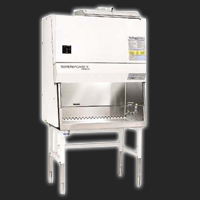|
|
|
|
 |
DegreeC engineers airflow and delivers solutions. We make airflow sensors, instruments for measuring airflow and custom-designed intelligent systems that deliver precise flows of air exactly where it's needed. We do this at chip scale, board level, box scale, room scale and for entire buildings. Our largest application is intelligent cooling systems to address the heat generated by densely packed electronics for a variety of industries...but we also offer airflow-based solutions for non-thermal applications - where precise measurement and control of the quantity and/or direction of airflow is critical.
Link:www.degreeC.com |
|
|
|
- Product Features
- Technical Parameters
- Download
There are two primary factors that need to be monitored in a BSC:
• Down draft air velocity and
• Air exchange rate.
Low down draft velocity ensures that the flow in the chamber is laminar. The flow range is
between 50-120 fpm. A sensor placed directly below the HEPA filter (S1) enables ensuring
laminar airflow by speed controlling the exhaust fan. Since the airflow at S1 is low, a direct
airflow measurement method is necessary.
Appropriate gross air movement through the BSC is monitored through S2, placed in exhaust
path. The volume of airflow is calculated by multiplying linear velocity by area of the exhaust
duct. Since the flow pattern is not of concern and the duct velocity may be high, direct or
indirect measurement methods may be used.DegreeC offers direct airflow sensors to world’s leading BSC manufacturers such as NuAire,
Lab Conco, Esco and Baker. DegreeC’s has years of experience in intelligent fan control,
sensing technology and airflow engineering for airflow and thermal management. |
|
|
|
|
|